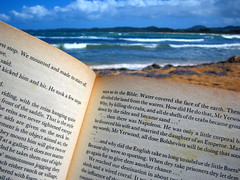- What do the conventions of this genre - the Quick Reference Guide - seem to be? All these QRGs share a set of conventions. They all include images/visuals, short paragraphs, a relevant and descriptive title, subheadings, and use of white space.
- How are those conventions defined by the author’s formatting and design choices? All examples exhibit these properties. Every subheading introduces a new aspect of the subject and the explanation is broken up into short paragraphs with plenty of space between. Most sections include a visual to help provide context or evoke emotion.
- What does the purpose of these QRGs seem to be? These QRGs seem to be for the sole purpose of informing the reader on the subject. It is broken up into smaller categories to make it more readable and allow someone to skip a section if they already know all about it.
- Who is the intended audience for these different QRGs? Are they all intended for similar audiences? Or different? How & why? The intended audience for the QRGs is anyone who doesn't know a lot about the subject. An expert on some subjects are not meant to read QRGs. Like an expert on Russian politics should not read the Sochi Opening Ceremony Explained or an expert on European economics would not need to read up on the Greek debt crisis.
- How do the QRGs use imagery or visuals? Why do you think they use them in this way? Some QRGs use images to evoke emotion while others use visuals to show statistics. Their purposes vary greatly. The emotion-evoking shots can make the viewer feel like action needs to be taken on the subject while the stats make a difference look more profound.
 |
| Laughlin, Nicholas. "reading waugh at luquillo" 3/3/08 via flickr. Attribution-NonCommercial-ShareAlike 2.0 Generic |
Reflection:
I read Alyssa's blog, Tobin's blog, and Isabel's blog. We all had nearly identical answers, most likely because we went over these questions in class, which was very helpful. I don't know how I would have answered these questions had we not gone over it in class. The most interesting point I found on Alyssa's blog. She wrote that the purpose of a QRG is to be a story-telling medium. I was treating it as an informative piece but I think viewing it as a story-telling medium will make revision much easier and help it flow better.
I like your blog post! The set up is a little different from all the other ones I've read, so it's refreshing to see. I also like how you included a picture at the end instead of at the beginning. Your blog clearly explains a QRG and you present information that is easily understandable.
ReplyDeleteKyle, you post explained the conventions of a quick reference guide as well as the questions behind what a QRG even was, and I enjoyed reading about it. I agree with your statement that a QRG should be mainly for people who are uninformed and/or curious on the subject at hand. Great post and look forward to reading more.
ReplyDeleteHey Kyle,
ReplyDeleteFirst and foremost, I think you specified the purpose for the QRG well. It's meant to inform, and that is probably the most important thing to understand for this genre, at least in my opinion. While I'm not sure if QRGs should not be prepared to have more knowledgeable readers, I do think you're right in saying that QRGs should be accessible for readers who may know nothing at all about the subject of the piece.
In response to your statement that all the example QRGs we reviewed exhibited qualities of the genre, I think that the E-cigarette example did a particularly great job of using space in unique ways that always served the purpose of providing information, which as you said, is the job of a QRG.
Thanks for the read, and nice work too.
-Mika